Everything You Need to Know About the Mythological Creatures in Trese
If you need a refresher, here's your complete guide.
By KARL GAVERZA | 2 days ago
Trese is a series close to my heart, what really drew me into the komiks was the action and use of the source material. When I heard about its upcoming anime adaptation, I, as well as many other fans, expected a lot. And I wasn’t disappointed.
There is so much in the show to think about, mysteries on top of mysteries, the use of folklore as an inspiration, and all with the use of amazing art direction. Trese did a good job condensing what was in the komiks while adding just enough to streamline the adaptation in a new media.
The writing, in particular, took the very best parts of the source material and gave it new life, smoothly integrating the dialogue and the plot into a new experience. The animation itself was very fluid which added to the suspense. The character of Alexandra Trese seems less invincible in Trese, compared to the graphic novels. There is a struggle in her character that is very refreshing to see. That vulnerability really makes you root for her character all the more. The 18 rating of Trese really helps drive the point that this isn’t just your regular show. The blood and gore were not there just as window dressing but actively added to the atmosphere of what Trese is trying to achieve.
The series takes inspiration from different mythological creatures from the Philippines. If you need a refresher, here's your complete guide to the inspirations behind the creatures of Trese. Let's get started.
The White Lady of Balete Drive
By KARL GAVERZA | 2 days ago
Trese is a series close to my heart, what really drew me into the komiks was the action and use of the source material. When I heard about its upcoming anime adaptation, I, as well as many other fans, expected a lot. And I wasn’t disappointed.
There is so much in the show to think about, mysteries on top of mysteries, the use of folklore as an inspiration, and all with the use of amazing art direction. Trese did a good job condensing what was in the komiks while adding just enough to streamline the adaptation in a new media.
The writing, in particular, took the very best parts of the source material and gave it new life, smoothly integrating the dialogue and the plot into a new experience. The animation itself was very fluid which added to the suspense. The character of Alexandra Trese seems less invincible in Trese, compared to the graphic novels. There is a struggle in her character that is very refreshing to see. That vulnerability really makes you root for her character all the more. The 18 rating of Trese really helps drive the point that this isn’t just your regular show. The blood and gore were not there just as window dressing but actively added to the atmosphere of what Trese is trying to achieve.
The series takes inspiration from different mythological creatures from the Philippines. If you need a refresher, here's your complete guide to the inspirations behind the creatures of Trese. Let's get started.
The White Lady of Balete Drive

THE LADY IN WHITE IS A FAMILIAR GHOST ENTITY IN A VARIETY OF ASIA PACIFIC CULTURES
AS WELL AS IN CHINA , THE KOREA'S AND JAPAN
The White Lady of Balete Drive is a beautiful woman with long hair that sometimes covers her face. She wears a white flowing dress, like that of a gown, slightly covered with bloodstains or dirt or with a face bathed in blood.
There are many versions of this urban legend: Some say a woman was raped at the same spot as Balete Drive by Japanese soldiers in the Second World War and that her ghost remains to avenge. Another version of the story says that the white lady was a student of the University of the Philippines. While on her way to Balete Drive from school, she was raped by a cab driver and her body was dumped in the area. Due to this, she appears to most cab drivers because she allegedly wants to seek revenge. A third version says a woman was driving in Balete Drive when she crashed her car, resulting in her death. In Trese, the White Lady of Balete Drive has been victimized twice—her ghost becoming a casualty in something bigger.
Nuno sa Punso
The White Lady of Balete Drive is a beautiful woman with long hair that sometimes covers her face. She wears a white flowing dress, like that of a gown, slightly covered with bloodstains or dirt or with a face bathed in blood.
There are many versions of this urban legend: Some say a woman was raped at the same spot as Balete Drive by Japanese soldiers in the Second World War and that her ghost remains to avenge. Another version of the story says that the white lady was a student of the University of the Philippines. While on her way to Balete Drive from school, she was raped by a cab driver and her body was dumped in the area. Due to this, she appears to most cab drivers because she allegedly wants to seek revenge. A third version says a woman was driving in Balete Drive when she crashed her car, resulting in her death. In Trese, the White Lady of Balete Drive has been victimized twice—her ghost becoming a casualty in something bigger.
Nuno sa Punso
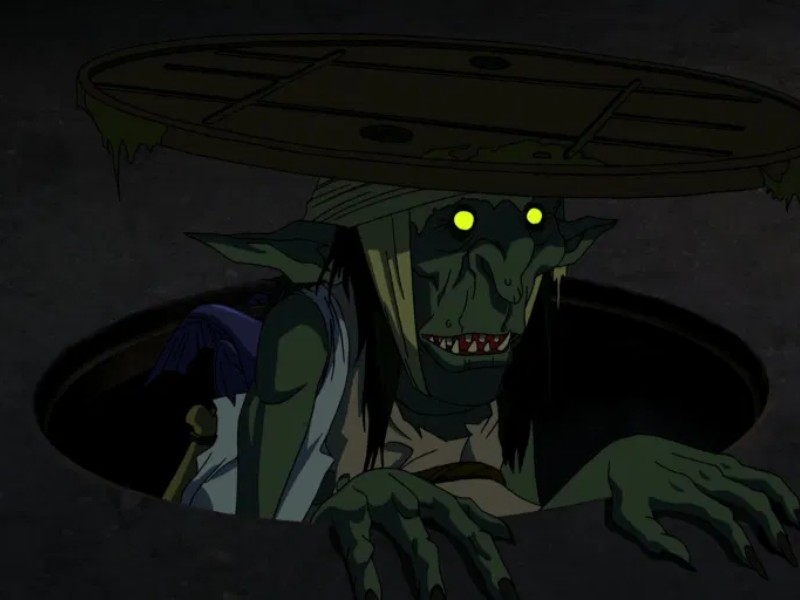
The Nuno sa Punso, which translates to grandfather of the mound, is an old man. He's described as very small, with reddish skin, with a long beard, and is hunchbacked. He's also sometimes seen holding a staff.
According to legend, the nuno steals pretty girls from villages and offers jewels or gold for them to live with him. While the saying, "Tabi, tabi po baka kayo mabunggo" which translates to "Excuse me, lest I bump you," is a polite way to pass through his domain. It is said that if you fail to utter the phrase, the nuno can be grazed and retaliate with fever or skin rashes. Offerings of food are made to the nuno to gain their favor, and in Trese, this is done through chocnut. Yes, the same peanut milk chocolate candy of our childhoods. In most legends, you would have to offer chickens, or other types of food. The series' nuno has a servant called Laman Lupa which is a collective term for dwarfs, gnomes, goblins, and other underground-dwellers in the Tagalog areas of Luzon. Both the duwende and the nuno belong to this group. While in Trese, this refers to an elemental made out of earth that is subservient to the nuno.
Aswang
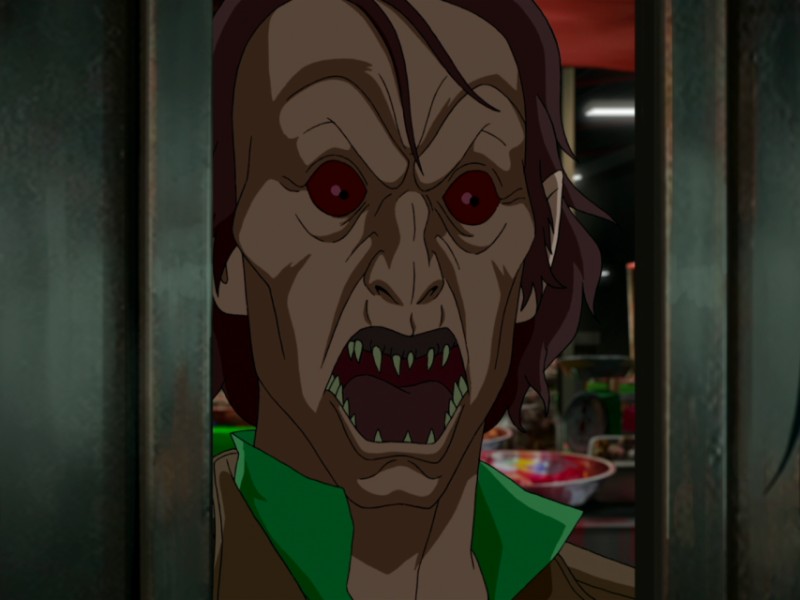
A huge part of the plot of Trese revolves around aswang tribes. But, what is an aswang? The term aswang is prolific in Philippine mythology. It may refer to a specific kind of monster with specific traits, yet it may also be a catch-all term for any kind of monster.
The term aswang is used by various ethnolinguistic groups, with some of them having no similarities whatsoever to the creatures they describe. An aswang in the north may be different from an aswang in the southern part of the Philippines. When aswang is translated it is usually done by calling it a witch, possessing supernatural powers that they use to spread terror. The general physical aspects of an aswang includes having a long, hollow tongue, sharp claws, sharp teeth, beautiful if in human form, and bestial if shapeshifted. By day, aswangs looks tired and pale, because they lack proper sleep as they are nocturnal.
\
Anthropologist Francis X. Lynch describes four ways of becoming an aswang: personal effort, the transmission of supernatural powers, contamination, and heredity. There are certain rituals that can turn one into an aswang if the subject is willing. The first ritual is to hold a fertilized chicken egg against one’s belly and then tie it in place with a piece of cloth around the body. After some time, the chicken from the egg will pass into the individual’s stomach in an osmosis-like manner. Then, the individual is able to make the sound 'tik, tik' that the aswang usually makes. The eggshell isn't thrown away and is instead placed in a bamboo tube alongside an ointment made from chicken droppings dissolved in coconut water and mixed with human flesh and blood. Another ritual is to go to the cemetery and take two fertilized eggs right after the Good Friday procession during the evening. The individual should stand straight, look directly at the full moon without blinking and place each egg under their armpits. After saying certain words three times (these words were not known by the informants) the egg disappears into their stomach, thereby turning them into an aswang. There should be a renewal of this procedure each year to keep the aswang powers.
There is also a belief that's widespread where an aswang just refuses to die without transferring its powers, usually to a member of its family or some friend. This process is done by having the initiate put their mouth close to the aswang's mouth (about two inches away). Then, the aswang chick hops into the mouth of the new aswang. Likewise, if an aswang puts any of their bodily fluids or human flesh into something that is ingested by a human, like food or water then the human will turn into an aswang themselves. This is clearly shown in the series' prison scene where captives are force-fed flesh. Then, there are the aswang's descendants which lasts up to seven generations as aswangs. Newly turned aswang are called yanggaw or bag-ong yanggaw as they cannot control their bloodlust and seek to feed.
Ibwa

One of the heads of the aswang clan is called Ibwa who is based on a specific mythical creature. Ibwa once mingled with the people in human form. Due to the thoughtless act of a mourner at a funeral, he became so addicted to the taste of human flesh that it has since been necessary to protect the corpse from him. He fears iron, hence, a piece of that metal is always laid on the grave. Holes are burned in each garment placed on the body to keep him from stealing them.
Xa Mul

Here's another head of the aswang clan that's based on a mythical creature: Xa Mul is an evil spirit who is said to swallow people alive without crushing them between his teeth. This spirit is present in the cultures of the Isneg or Apayao, an Austronesian ethnic group native to Apayao Province in the Philippines' Cordillera Administrative Region.
Ibu
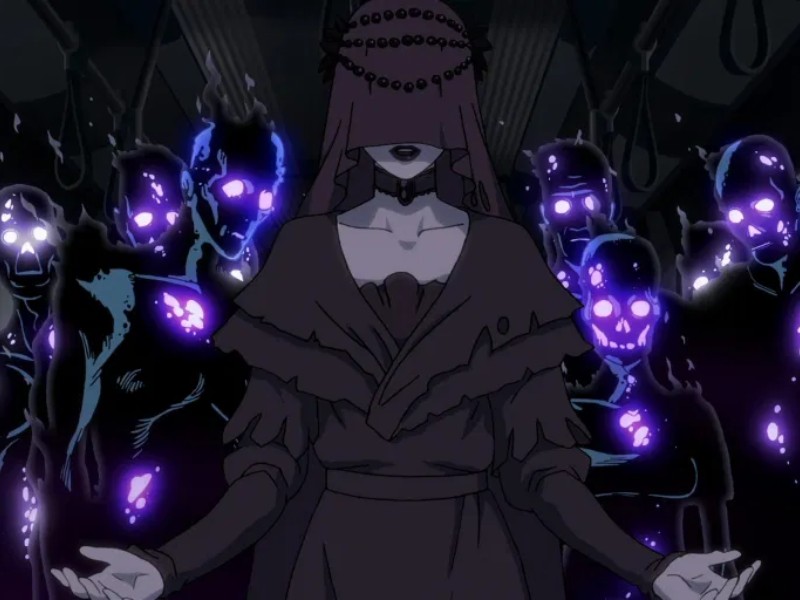
Ibu is the Manobo goddess of death and the underworld. She is the queen of the underworld whose abode is down below at the pillars of the world. All care, worries, and trouble are no more in the underworld. Under the rule of the mistress Ibu, souls work, eat and even marry. In Trese, her emissary is a psychopomp—a guide of souls to the place of the dead. She uses the MRT and LRT as transportation for souls to her realm. In most Philippine myths, the soul is ferried to the next world by means of a boat, crossing the sea to the underworld.
Santelmo
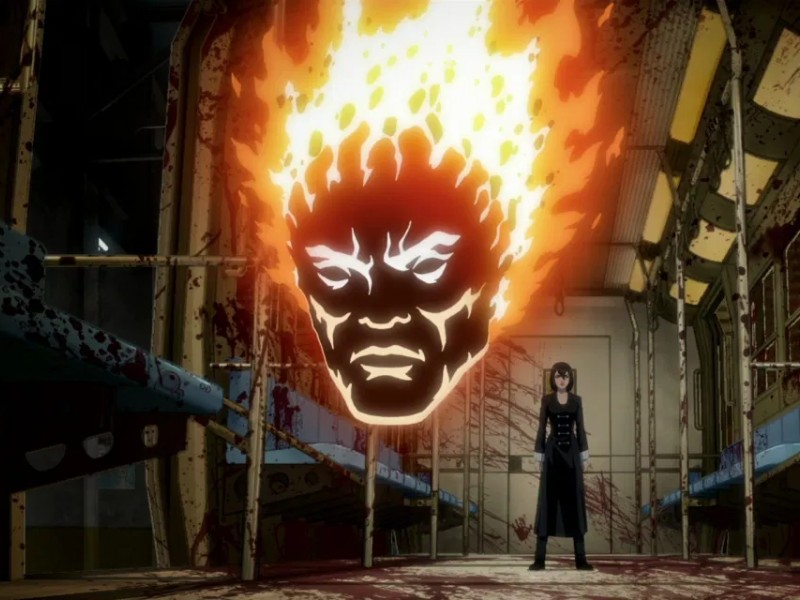
Depicted as floating balls of fire, santelmo are said to be souls of people lost at sea. They are kept at bay by sprinkling salt on your sails. In other legends, a santelmo is formed when sunlight comes into contact with spilled human blood. Trese, on the other, features Santelmo who is called on by Alexandra Trese as the spirit of the Great Binondo Fire, which happened in the '50s. The depiction in Trese has the santelmo as more fire elementals that can be called upon for help.
Tikbalang
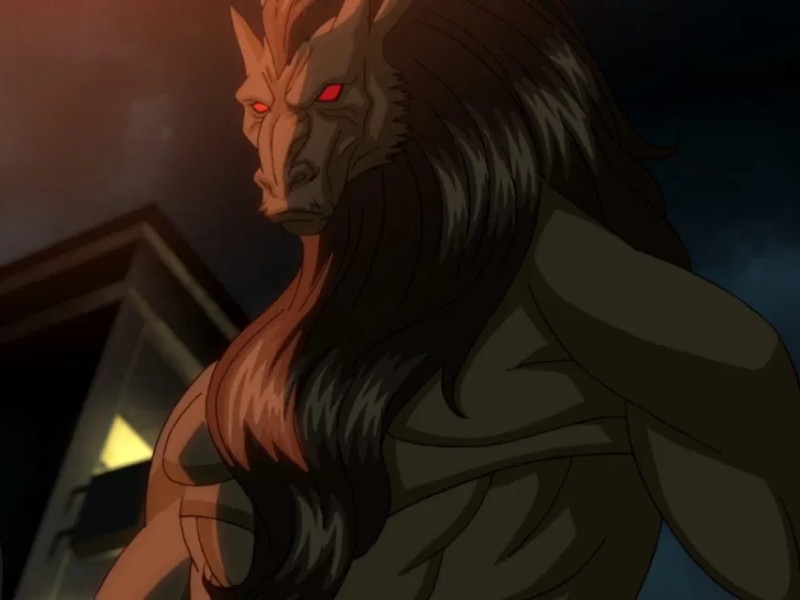
Tikbalang can be identified by their human bodies which are characterized by horse heads and long limbs—so long that when they sit their knees reach above their heads. These creatures are also described as a 'tall thin black men with a horse's head and terrible teeth.' They can be warded off by turning your clothes inside out. Sometimes, the tikbalang can even change itself into the form of one of the relatives of its victim before transforming back to scare its victim. Legend has it one can be controlled by taking three hairs from its head.
Trese's Tikbalang is fond of races, as befits their horse-like nature. This translates to one Tikbalang in particular as the best racer around. In old legends, if you want to control a tikbalang you have to ride it and wait until you grab three hairs from the top of its mane.
Red Dwende
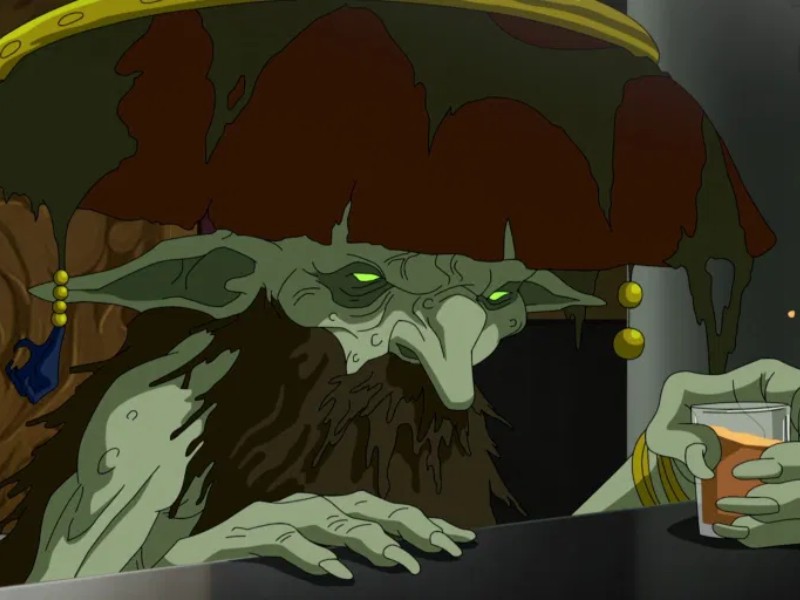
There are many kinds of dwende: black, white, green and red. Amang Paso is a red dwende that are known to be neutral, as it can be either beneficient or maleficent. They are fond of chicken sacrifices and teach prayers, or oracion. Red dwende are who you go to if you want an agimat (talisman). Don't get any ideas, though, as they may be easy to invoke but they are difficult to get rid of. It is said that if they like you, they'll go with you wherever you will be.
Wind Elementals
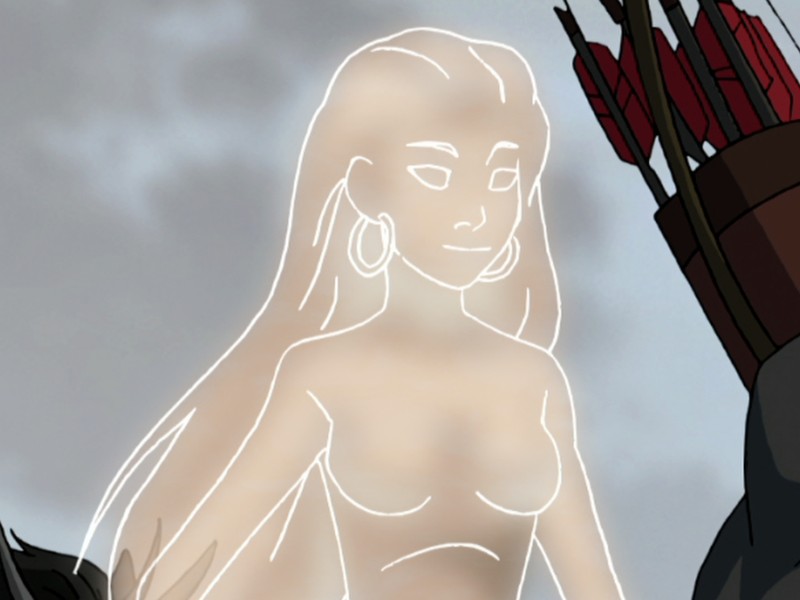
Hannah and Amie are wind people—elementals that have power over the winds. The closest creatures that fit this description are the Ilonggo awan-awan. They are said to control the wind, rain, lightning, thunder, typhoon, and the whirlwind. Plus, they can also bring about sickness and death. Naturally, wind elementals live in the space between the clouds and the earth.
Tiyanak
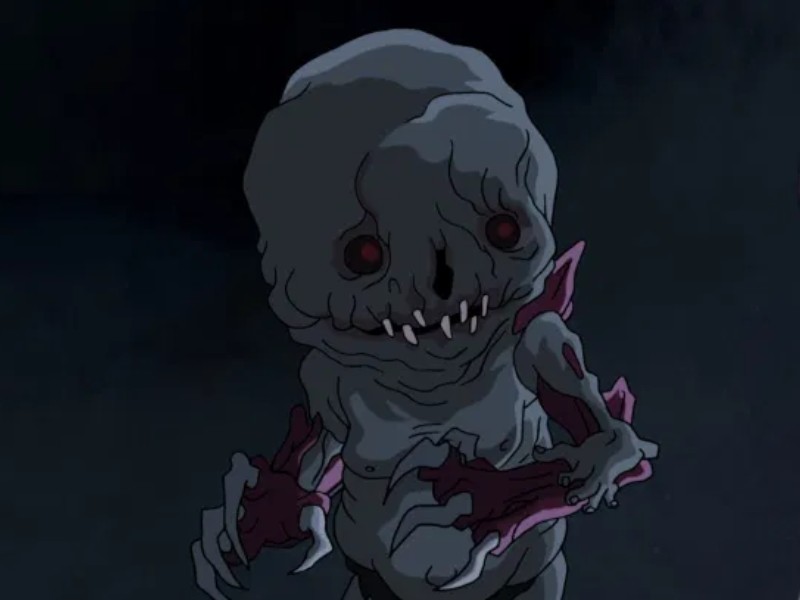
Tiyanak are said to be the souls of babies that have died without being baptized. They want to play with whoever passes by them, and their favorite playmates are children with uncommon names. It is said that they crow like birds and they cry to lure childless couples. Then, they wait until they find an opportunity to kill the couple by sucking their blood. A tiyanak attracts people through its infant-like wails and the creature transforms into its hideous form when picked up. From there, it mauls the victim until they are dead.
Trese portrays the creature as goblins that possess small corpses left in the woods. In the tiyanak's legends, their true form is a hideous creature that returned from death. The tiyanak is also a shapeshifter, capable of taking on many forms.
Sigbin
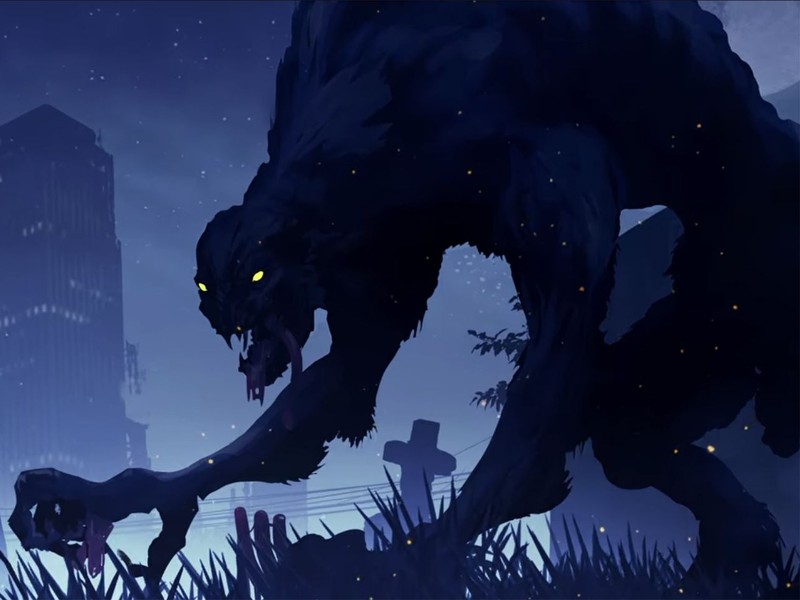
A sigbin can look like a locust, frog, or a goat without horns and long hind legs like a kangaroo with large ears that flap. It has a long tail that's used to whip victims. They drink the blood of their victims by sucking at their shadows, and steal the bodies of their victims so that they can eat it with their aswang masters. Sigbins show themselves during the full moon. You'll be able to tell if it's a sigbin as it walks backward and it can reach its head at the back of its feet. Here's some useful information: they are afraid of sharp objects including knives.
In the series, Anton Trese's familiars are sigbin that are capable of shapeshifting into massive dogs. With this form, they function as very efficient trackers that have a
strong sense of smell.
Datu Talagbusao
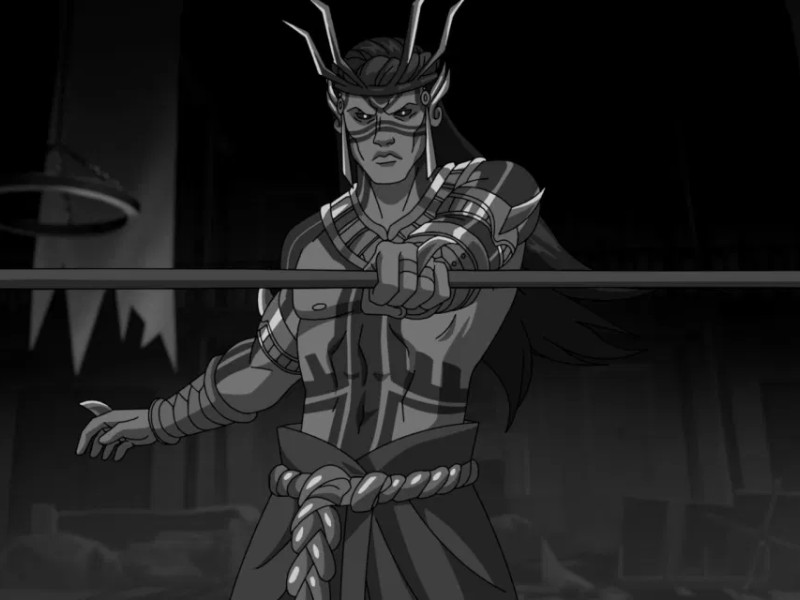
The datu talagbusao is a Bukidnon god of war in the form of a warrior with big red eyes with a red garment.
Talagbusao is uncontrollable. He can enter a mortal warrior’s body and make him fight fiercely to avenge a misdeed, but he can also drive the warrior to insanity due to the gods excessive demand for the blood of pigs, chickens, or humans. The talagbusao in the world of Trese takes his place as the god of war, using his powers to manipulate the tides of battle.
Reprinted with permission from Philippine Spirits.
PHOTOS COURTESY OF NETFLIX.
Five must-read materials for a crash course on Philippine mythology.
By ANRI ICHIMURA | ESQUIRE PH | Jun 8, 2021
By ANRI ICHIMURA | ESQUIRE PH | Jun 8, 2021
With all of the genius promotional materials around Metro Manila—from the alleged aswang caught on tape vandalizing a billboard to manananggals flying over busy streets—there’s hardly a Filipino netizen that isn’t eagerly awaiting Trese’s premiere on Netflix on June 11.
The Filipino animated series will bring the beloved graphic novels of the same name to life, giving audiences a new and revamped way of experiencing the Philippine mythology and folklore that enrich our culture.
Philippine mythology can be complicated, but Esquire caught up with Budjette Tan, co-creator and writer of the Trese komiks, who shared his starter pack for novices of Philippine mythology. Here are five required reading materials that’ll fully initiate you into the world of Filipino folklore.
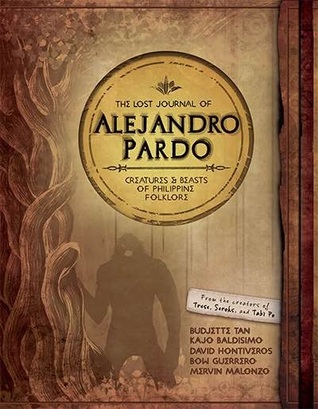
PHOTO BY SUMMIT BOOKS.
1| The Lost Journal of Alejandro Pardo: Creatures and Beasts of Philippine Folklore
Sometime after creating Trese, Tan created his own lexicon on Philippine mythological creatures with The Lost Journal of Alejandro Pardo: Creatures and Beasts of Philippine Folklore. It was also illustrated by Trese illustrator and co-creator Kaljo Baldisimo.
Similar in style to Harry Potter’s Fantastic Beasts and Where to Find Them, each description of the creatures and monsters of Philippine mythology is accompanied with fascinating, if terrifying, illustrations. The Lost Journals is no longer in print, but it is available as an eBook on Summit Books’ flagship Lazada store.
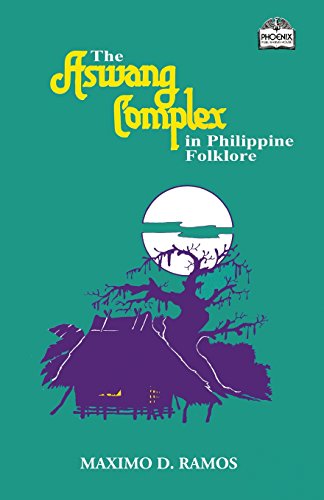
PHOTO BY AMAZON.
2| The Works of Maximo Ramos
Even in death, Maximo Ramos remains a pillar in Filipino folklore literature. Tan shares Ramos is a great starting point for those who want a comprehensive education on Philippine literature. Some of his books include: Philippine Myths, Legends, and Folktales; Legends of the Lower Gods; The Creatures of Midnight; and The Aswang Complex in Philippine Folklore.
His works have been published worldwide, and there’s a good chance you’ll find some of his books on Philippine myths and legends in the Filipiniana section of your community or university library. If not, you can purchase his paperbacks on Amazon.
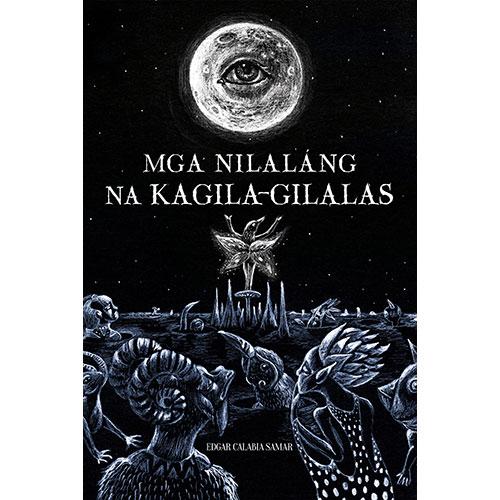
PHOTO BY ADARNA.
3| Mga Nilalang na Kagila-gilalas
Originally published as 101 Kagila-gilalas na Nilalang, the popular mythology book was reprinted as Mga Nilalang na Kagila-gilalas in 2019. Similar to The Lost Journal of Alejandro Pardo, this Adarna-published guide to Philippine mythology is written in Tagalog and features over 100 creatures, gods, goddesses, and monsters.
Mga Nilalang na Kagila-gilalas was written by Edgar Calabia Samar and is available on the Adarna House website.
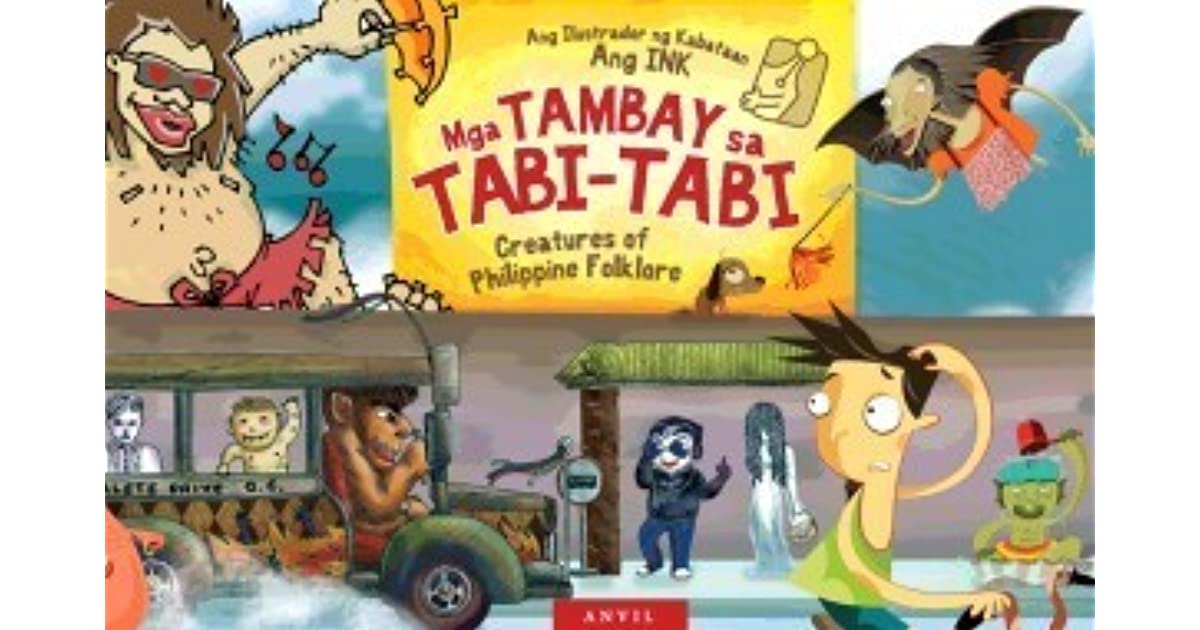
PHOTO BY ANVIL.
4| Mga Tambay sa Tabi-Tabi
If you’re really struggling to keep up with the complicated pantheon of Philippine mythology, Tan recommends Mga Tambay sa Tabi-tabi: Creatures of Philippine Folklore written by Ang Illustrador ng Kabataan and published by Anvil.
It’s actually a Tagalog children’s book designed to introduce the myths of Filipino culture, but it’s a great crash course that’s easy to digest. The book appears to be out of print, but if you don’t mind preloved books, you can find a copy on Carousell or one of the many secondhand book shops on social media.

PHOTO BY THE ASWANG PROJECT
5| The Aswang Project
Last but not least is The Aswang Project, a comprehensive online resource that was created by Jordan Clark in 2006. The site includes articles and videos on creatures, legends, and cultures of Philippine mythology.
What started as an introductory website to Filipino folklore has since evolved into something far more advanced and detailed as it records the hundreds of regional creatures and myths across the Philippine archipelago. If we had to rank this, we’d say The Aswang Project is for more advanced acolytes of Philippine mythology. You can visit the website here
Think you’re ready for Trese now? The show drops on June 11, only on Netflix.
MORE FROM ESQUIREMAG.PH
The Filipino animated series will bring the beloved graphic novels of the same name to life, giving audiences a new and revamped way of experiencing the Philippine mythology and folklore that enrich our culture.
Philippine mythology can be complicated, but Esquire caught up with Budjette Tan, co-creator and writer of the Trese komiks, who shared his starter pack for novices of Philippine mythology. Here are five required reading materials that’ll fully initiate you into the world of Filipino folklore.

PHOTO BY SUMMIT BOOKS.
1| The Lost Journal of Alejandro Pardo: Creatures and Beasts of Philippine Folklore
Sometime after creating Trese, Tan created his own lexicon on Philippine mythological creatures with The Lost Journal of Alejandro Pardo: Creatures and Beasts of Philippine Folklore. It was also illustrated by Trese illustrator and co-creator Kaljo Baldisimo.
Similar in style to Harry Potter’s Fantastic Beasts and Where to Find Them, each description of the creatures and monsters of Philippine mythology is accompanied with fascinating, if terrifying, illustrations. The Lost Journals is no longer in print, but it is available as an eBook on Summit Books’ flagship Lazada store.

PHOTO BY AMAZON.
2| The Works of Maximo Ramos
Even in death, Maximo Ramos remains a pillar in Filipino folklore literature. Tan shares Ramos is a great starting point for those who want a comprehensive education on Philippine literature. Some of his books include: Philippine Myths, Legends, and Folktales; Legends of the Lower Gods; The Creatures of Midnight; and The Aswang Complex in Philippine Folklore.
His works have been published worldwide, and there’s a good chance you’ll find some of his books on Philippine myths and legends in the Filipiniana section of your community or university library. If not, you can purchase his paperbacks on Amazon.

PHOTO BY ADARNA.
3| Mga Nilalang na Kagila-gilalas
Originally published as 101 Kagila-gilalas na Nilalang, the popular mythology book was reprinted as Mga Nilalang na Kagila-gilalas in 2019. Similar to The Lost Journal of Alejandro Pardo, this Adarna-published guide to Philippine mythology is written in Tagalog and features over 100 creatures, gods, goddesses, and monsters.
Mga Nilalang na Kagila-gilalas was written by Edgar Calabia Samar and is available on the Adarna House website.

PHOTO BY ANVIL.
4| Mga Tambay sa Tabi-Tabi
If you’re really struggling to keep up with the complicated pantheon of Philippine mythology, Tan recommends Mga Tambay sa Tabi-tabi: Creatures of Philippine Folklore written by Ang Illustrador ng Kabataan and published by Anvil.
It’s actually a Tagalog children’s book designed to introduce the myths of Filipino culture, but it’s a great crash course that’s easy to digest. The book appears to be out of print, but if you don’t mind preloved books, you can find a copy on Carousell or one of the many secondhand book shops on social media.

PHOTO BY THE ASWANG PROJECT
5| The Aswang Project
Last but not least is The Aswang Project, a comprehensive online resource that was created by Jordan Clark in 2006. The site includes articles and videos on creatures, legends, and cultures of Philippine mythology.
What started as an introductory website to Filipino folklore has since evolved into something far more advanced and detailed as it records the hundreds of regional creatures and myths across the Philippine archipelago. If we had to rank this, we’d say The Aswang Project is for more advanced acolytes of Philippine mythology. You can visit the website here
WATCH: Here's the Trese Creator's Starter Pack to Philippine Mythology
Think you’re ready for Trese now? The show drops on June 11, only on Netflix.
MORE FROM ESQUIREMAG.PH


.jpg)
.jpg)
.jpg)


















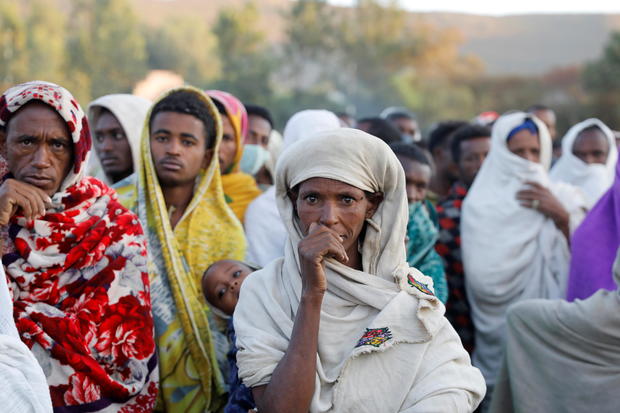 A woman stands in line to receive food donations at the Tsehaye primary school, which was turned into a temporary shelter for people displaced by conflict, in the town of Shire in the Tigray region of Ethiopia on March 15, 2021. BAZ RATNER / REUTERS
A woman stands in line to receive food donations at the Tsehaye primary school, which was turned into a temporary shelter for people displaced by conflict, in the town of Shire in the Tigray region of Ethiopia on March 15, 2021. BAZ RATNER / REUTERS